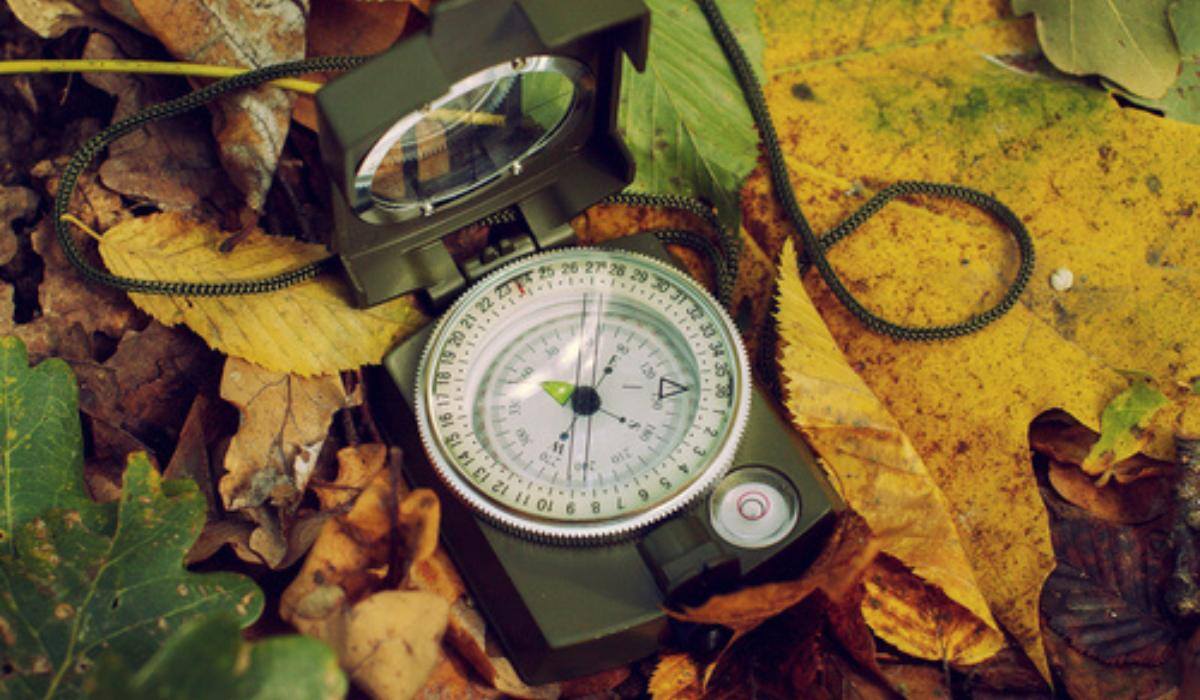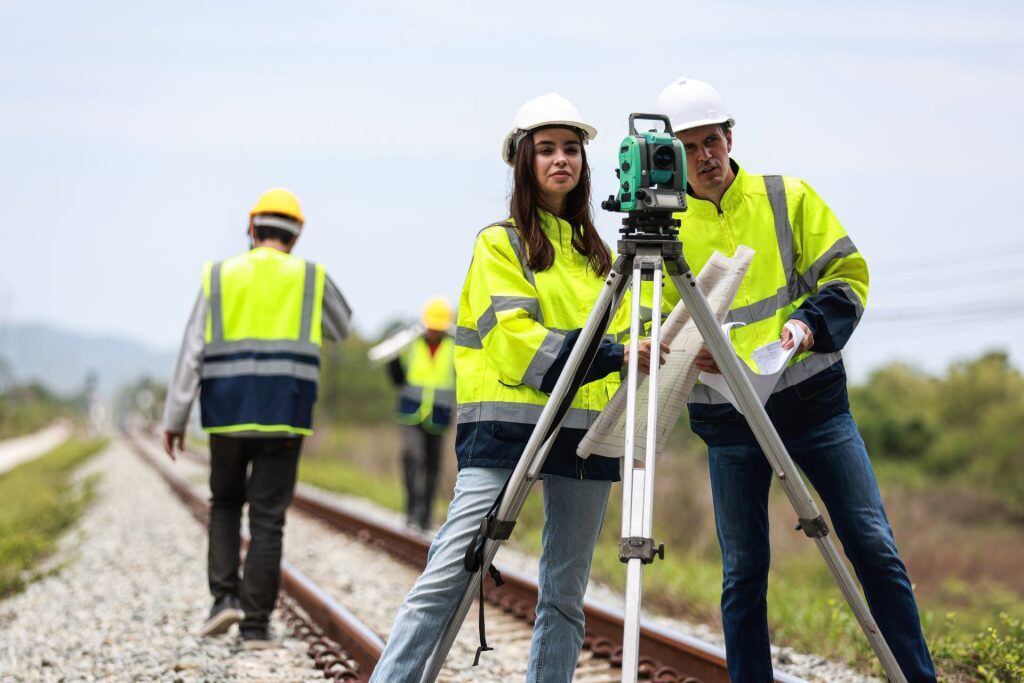
Ever wondered how land measurements are taken with such precision? Chain surveying is one of the simplest yet highly effective methods used to measure distances directly on the ground. By using various types of chain in surveying, this method allows surveyors to map small, level areas accurately without complex instruments. Chain surveying relies on straightforward tools like chains, ranging rods, and arrows, making it accessible and cost-effective.
If you are wondering what is chain surveying, read this blog and understand what it is, the different types of chain in surveying, its principles, and instruments that make chain surveying an essential technique in civil engineering and land mapping.
What is Chain Surveying?
Chain surveying is a basic yet effective method in civil engineering for mapping and measuring relatively small and level areas, often applied where detailed accuracy is not required for complex terrains. In this method, engineers use a survey chain, a tool made up of metal links.
This chain length is ideal for marking straight lines between survey stations, allowing professionals to divide the area into manageable triangles for easy measurement. Chain surveying is valued for its simplicity and precision when measuring straightforward, open plots, making it a practical choice for boundary mapping, plot division, and basic layout tasks in engineering projects.
Types of Chain Surveying?
Chain Surveying covers various approaches to measuring land, with techniques that adapt to different terrains and accuracy requirements. Here are some common types of chain surveying:
1. Metric Chain
It is one of the widely used chain types, which has standard lengths of 5, 10, 20, and 30 meters. It is typically constructed with links of galvanised steel wire, and each link is 20 centimetres in length. Metric chains are commonly preferred for civil engineering projects because they provide precise measurements and are straightforward to use. They come equipped with brass rings at regular intervals to help surveyors easily count and track the distance covered, making them essential chain surveying instruments.
2. Gunter's Chain or Surveyor’s Chain
Named after the mathematician Edmund Gunter, this chain measures 66 feet and is divided into 100 links, with each link being 0.66 feet in length. The Gunter's chain has historical significance and was widely used in early land surveying, especially for agricultural and land ownership mapping. Even today, the Gunter's chain is still relevant for certain rural surveys and mapping tasks. Its unique length allows for easy calculation of acres, as 10 square chains equal one acre.
3. Engineer’s Chain
The engineer’s chain, also known as the revenue chain, is a longer chain measuring 100 feet and is divided into 100 links, each one foot in length. This chain is frequently used in civil engineering projects, particularly for topographical and large-scale surveys. Its design facilitates the measurement of significant land areas, such as those needed for highway construction, railways, or large infrastructure projects. The engineer’s chain is marked at every 10 links, helping surveyors take consistent measurements across long distances.
4. Steel Band or Band Chain
Made from steel or sometimes an alloy of nickel and chromium, steel band chains, or simply band chains, are composed of narrow steel bands with markings at every metre, decimeter, and centimetre. Unlike link chains, band chains provide a continuous measure without interruptions, making them particularly useful for high-precision work where more accuracy is required than link chains can provide. Their lengths generally range from 20 to 30 metres, and they are often used in large civil engineering projects and construction surveys.

Principles of Chain Surveying
Chain surveying in civil engineering is a simple and practical technique that relies on fundamental principles to ensure accurate land measurement. Understanding what is the principle of chain surveying is essential to its application and accuracy.
1. Establishing a Framework of Triangles
One core principle in chain surveying uses the principle of dividing the survey area into a series of connected triangles. Triangles are a preferred shape in surveying because they are stable and accurate for measurement. If the lengths of all three sides are known, a triangle’s shape is fixed. This method of dividing the survey area allows surveyors to cover large areas through smaller, manageable triangles, which minimises errors and simplifies calculations.
2. Locating Points Using Reference Lines
Chain surveying in civil engineering also relies on baseline measurements. A baseline is the primary line measured and is typically the longest line in the survey. From this line, other lines or chains are measured to form triangles and establish secondary points across the survey area. By measuring additional lines from this baseline, surveyors ensure each point is accurately located in relation to other points, enabling precise mapping of the area.
3. Direct Linear Measurement
The second principle of chain surveying is the reliance on direct measurement. All measurements in chain surveying are taken in a straight line from point to point, making it suitable for flat and relatively simple landscapes. The surveyor uses a chain or tape to measure distances between designated survey points, marking them with pegs or markers. Since only linear distances are measured, chain surveying is a simple and efficient way to gather data without requiring complex instruments.
4. Avoiding Obstructions and Accounting for Errors
Although chain surveying uses the principle of direct measurement, obstacles may sometimes be in the way. Surveyors use methods to bypass obstacles, such as shifting the chain to measure indirectly or offsetting the measurement line to avoid the obstruction. Additionally, by carefully maintaining the chain, calibrating equipment, and measuring on stable ground, surveyors can reduce inaccuracies and maintain consistent results across multiple measurements.
5. Checking and Verifying Measurements
Finally, another principle of chain surveying is the consistent checking of measurements. Surveyors often re-measure lines or check triangular formations to confirm accuracy. By re-measuring a line from both directions or double-checking points, surveyors can verify their data and correct any errors, which is essential for reliable mapping and planning. This principle is especially important in chain surveying in civil engineering, where precision is critical for project success.

Instruments Used in Chain Surveying
Understanding the instruments used in chain surveying is essential for effective measurement and proper fieldwork setup. Here is a look at the primary tools used in this type of surveying.
-
Chain: The chain is the most fundamental tool in chain surveying. Made of iron or steel links connected by rings, it comes in various lengths and provides the core measurement for distance. Each link in the chain is typically about 20 centimetres, and the chain’s total length is divided into standard measurements.
-
Arrows or Pins: These are essential instruments used in chain surveying to mark the endpoints of each chain length as surveyors measure. These arrows are thin, pointed iron rods, and are used by inserting them into the ground. Surveyors use these pins to mark progress across long distances, ensuring accurate, continuous measurements along a straight line.
-
Tape: Another important instrument in chain surveying is the tape, typically made from steel, fibreglass, or cloth. Tapes serve as a backup to chains or for measurements over shorter distances. Steel tape provides more precision, especially for measurements that require high accuracy, while fibreglass tapes are more resistant to damage and are suitable for rough terrains.
-
Pegs: Pegs in chain surveying are short wooden or metal stakes used to mark important points, such as the start and end of a line, as well as reference points for triangulation. These are driven into the ground to provide stable markers. When surveyors begin a measurement, they place a peg at the starting point, and as the survey progresses, pegs are used to establish and maintain these critical locations for alignment and accuracy.
-
Cross Staff: A cross staff is a tool used to set out right angles during surveying. This instrument helps surveyors align lines perpendicular to the base line, making it invaluable for laying out triangles or square areas. The cross staff is typically mounted on a pole and has sighting slots that enable accurate placement for right-angle alignment.
-
Ranging Rods: These are tall poles with distinct colour bands that help surveyors maintain alignment over long distances. Made from wood or metal, they are usually painted in alternating red and white bands for visibility. Ranging rods are particularly useful for ensuring that the chain or tape follows a straight line, as one surveyor stands at the start of the line while other places the rods at equal intervals.
-
Plumb Bob: The plumb bob is a small, weighted tool that ensures vertical alignment during measurements. It’s especially helpful in situations where surveyors need to ensure that measurements are taken directly from above a point, such as measuring heights or when placing ranging rods and pegs vertically.
-
Mallet: A mallet is used to drive pegs in chain surveying into the ground, marking essential points and maintaining stability. Since pegs serve as anchors for key survey positions, the mallet provides a reliable way to secure them in place, ensuring accuracy throughout the surveying process.
-
Offset Staff: These are measuring sticks used for taking short measurements from a survey line. This tool is handy when dealing with small offsets or side measurements from the main line. The offset staff helps surveyors measure these perpendicular distances without the need for the larger chain, maintaining efficiency in the process.
Also Read: Free Cyber Security Training
Step-By-Step Process of Chain Surveying
Here is a detailed procedure of chain surveying that you should know:
-
Planning the Survey Line: Before starting, surveyors decide the boundaries of the area to be surveyed. They choose a starting point and establish the first baseline.
-
Setting the First Chain Line: The first chain length is laid out along the baseline. Pegs or arrows are placed at both ends of the chain to mark the starting and ending points.
-
Measuring Distances: The surveyor continues to lay the chain across the land, measuring distances and placing pegs at regular intervals. If needed, a ranging rod is used to ensure the line is straight.
-
Marking Points and Offsets: At key intervals, surveyors record measurements and any offsets (distances that run perpendicular to the baseline). Offset staffs are used for these short side measurements.
-
Checking the Accuracy: Throughout the process, it is important to check the measurements for accuracy by adjusting the line and re-measuring. This prevents errors in the data collection.
-
Closing the Survey: The final step in chain surveying is closing the survey by returning to the original starting point or a previously marked point. This ensures that the survey forms a complete loop, and there are no measurement discrepancies.
Wondering what is the last step in chain surveying? It is when the surveyor closes the loop and checks the measurements to confirm accuracy, marking the end of the process. This final verification step helps to ensure that the entire survey is precise and ready for further analysis.
Errors in Chain Surveying
In chain surveying in civil engineering, accuracy is critical for reliable measurements and planning. However, various types of errors can impact the quality of results. Understanding the common errors in chain surveying is essential for identifying and correcting inaccuracies.
-
Personal Errors: These occur due to human miscalculations or inaccuracies, such as incorrect chaining or reading errors. Surveyors may misread the measurement marks or fail to properly align the chain. These can be prevented with proper training and regular checks.
-
Instrumental Errors: These arise from flaws in the chain surveying instruments themselves, such as wear and tear in the chain links over time. Chains may stretch, or links may get damaged, altering the chain’s effective length. Regular maintenance and calibration of instruments are key to preventing such errors.
-
Natural Errors: Environmental conditions can impact chain measurements. For example, temperature fluctuations cause chains to expand or contract, which changes their length. The effects of wind or uneven ground also contribute to errors. Surveyors often correct these natural obstacles in chain surveying by accounting for environmental conditions in advance and performing surveys during stable weather.
-
Errors Due to Sag: In longer measurements, sagging of the chain between two points can result in slight inaccuracies. When the chain is suspended, its weight can cause it to sag in the middle, affecting horizontal measurements. This is particularly relevant in sloped or rugged terrains, where sag is harder to manage. Careful levelling of the chain can help mitigate this issue.
-
Errors in Alignment: If the chain is not aligned accurately between two points, the measurements can be skewed. Ensuring correct alignment, especially over long distances, is essential to maintain the survey’s precision. Surveyors use markers to align the chain and avoid such errors in chain surveying.
Conclusion
Chain surveying remains a vital technique in civil engineering for measuring small areas with minimal equipment. It is crucial to understand the procedure of chain surveying for accurate results. Its simplicity and effectiveness make it an accessible choice for quick surveys. For aspiring civil engineers, mastering fundamental skills like chain surveying is foundational. To enhance your skill set, the BIM Professional Course for Civil Engineers by Novatr offers hands-on training in modern surveying and project management, empowering professionals to excel in the field.
Check out Novatr's Resource Page for news, trends, and educational content in civil engineering and construction!
Was this content helpful to you










